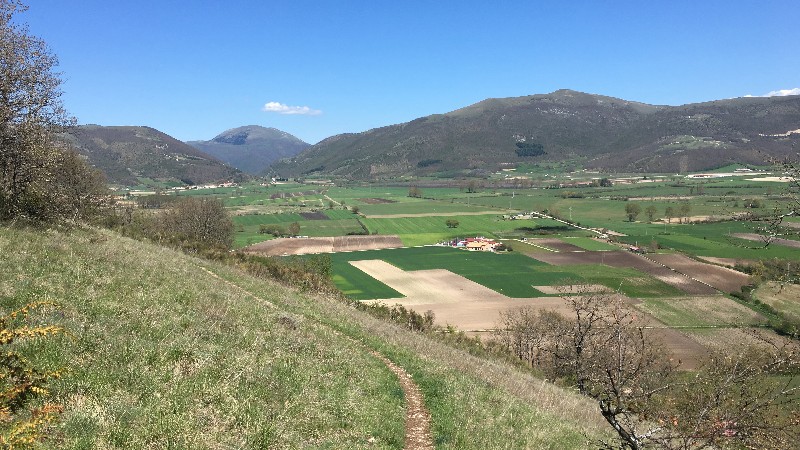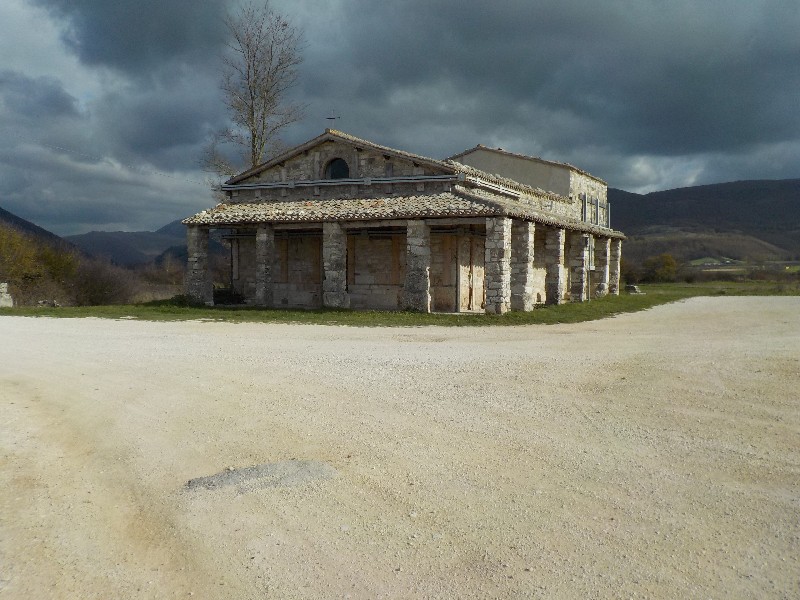Going up to Mount Orve, we can admire to the east and north-east the vast plain of Colfiorito, which is one of the seven karst plains better known as the “Plateaus of Colfiorito” or “Plestini Plateaus”. It is a large plain, also called "Piano del Casone", located at an altitude of 760-750 m a.s.l., on the border between Umbria and Marche. In ancient times the plain housed a lake, which was drained in the fifteenth century because of the construction of the Barrel of Varano, a work commissioned by Giulio Cesare Varano, lord of Camerino. This structure stands on the north-eastern edge of the plain, not far away from a Roman collector built with the same function. Looking at east, about 1 km away as the crow flies, we can see the Basilica of Plestia or the Church of Santa Maria Pistia. Plestia is the name of the Roman city that occupied the plain, starting from the III-II century BC. Some vestiges of the city remain in the area: the church itself, known since the 10th century, was built on the remains of a temple open to the forum.

Il progetto Divina Foligno è sviluppato nell’ambito del “programma Agenda urbana di Foligno Smart community - Comunità, Sostenibilità – Foligno 2020” intervento OT.6 INT_01 “Realizzazione della rete di attrattori culturali attraverso la realizzazione di itinerari culturali e tematici

The Divina Foligno project is promoted and financed as part of the "Urban Agenda of Foligno Smart community - Community, Sustainability - Foligno 2020 program" intervention OT.6 INT_01 "Creation of a network of cultural attractions through the creation of cultural and thematic itineraries"

Copyright © 2022 Landmark. All rights reserved.


